Life Along Kallidromiou Street in Athens
A stroll down one of the...
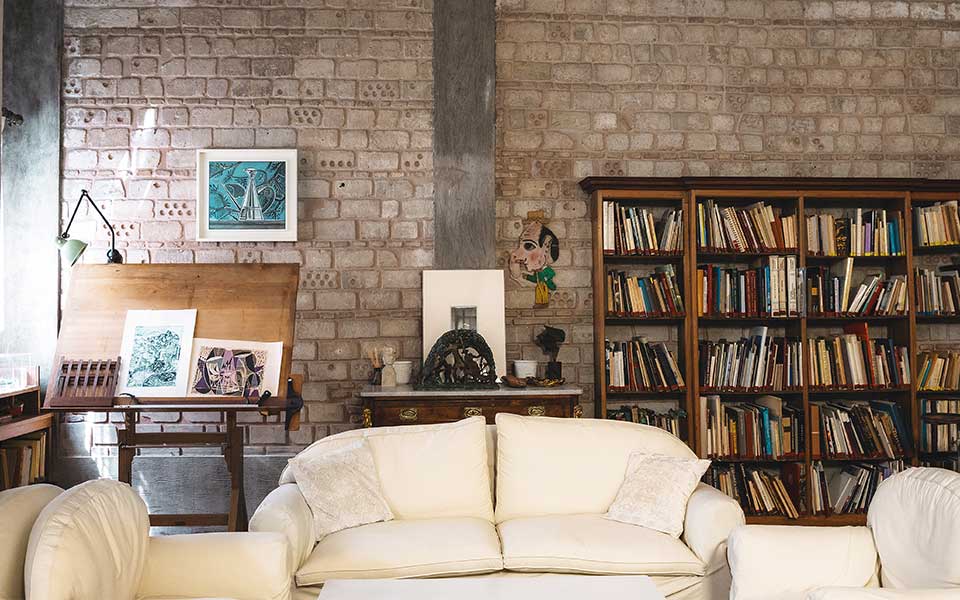
The living room of the 4th floor apartment with the artist’s ink drawings depicting landscapes and scenes from his travels in the Far East.
© Yiorgos Vellis
The family home of painter, engraver, and stage designer Nikos Hadjikyriakos-Ghika is a quintessential example of interwar apartment architecture. In 1955, the artist renovated the 4th floor of the building at 3 Kriezotou Street, and added an extra story for his studio. An advocate of modernism and a vital figure of the Generation of the ’30s, Ghika, whose works hang in the Tate Gallery, MoMA, and the Musée d’Art Moderne in Paris, found his unique style in Greece by combining the principles of cubism with the distinctive light and architecture of his homeland.
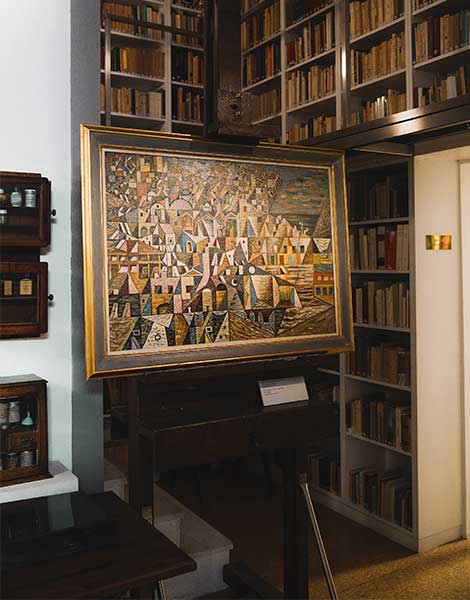
© Yiorgos Vellis
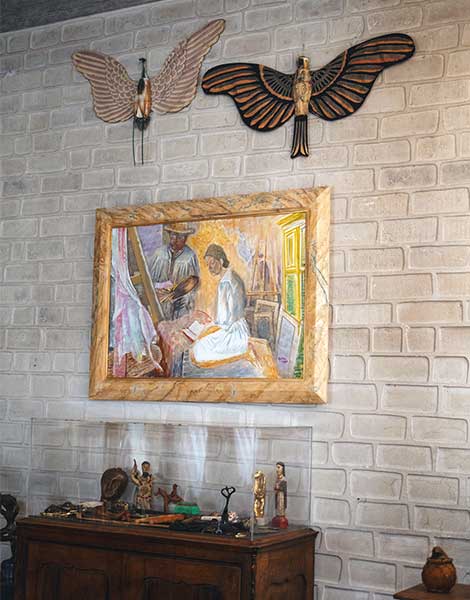
© Yiorgos Vellis
In 1989, Ghika donated his collection and family home to the Benaki Museum. Part of the elevated ground floor and two more floors now serve as a repository of Greek intellectual and artistic creation from the end of WWI to the onset of the Greek military junta (1967-1974). The gallery features paintings by prominent artists such as Tsarouchis, Moralis, Kontoglou, and Theofilos, along with engravings, photographs, manuscripts, the Nobel Prizes of George Seferis and Odysseas Elytis, and the Lenin Prize, awarded to Yiannis Ritsos in 1977. The building’s fourth and fifth floors, where Ghika lived and worked, are also open to visitors. The use of exposed concrete in the columns, frames and ceiling beams, the oil painting “Kifissia” in the dining room, and the terrace with terracotta Caryatids are particularly striking. The studio holds furniture from the family mansion in Hydra, souvenirs from his travels, and books.
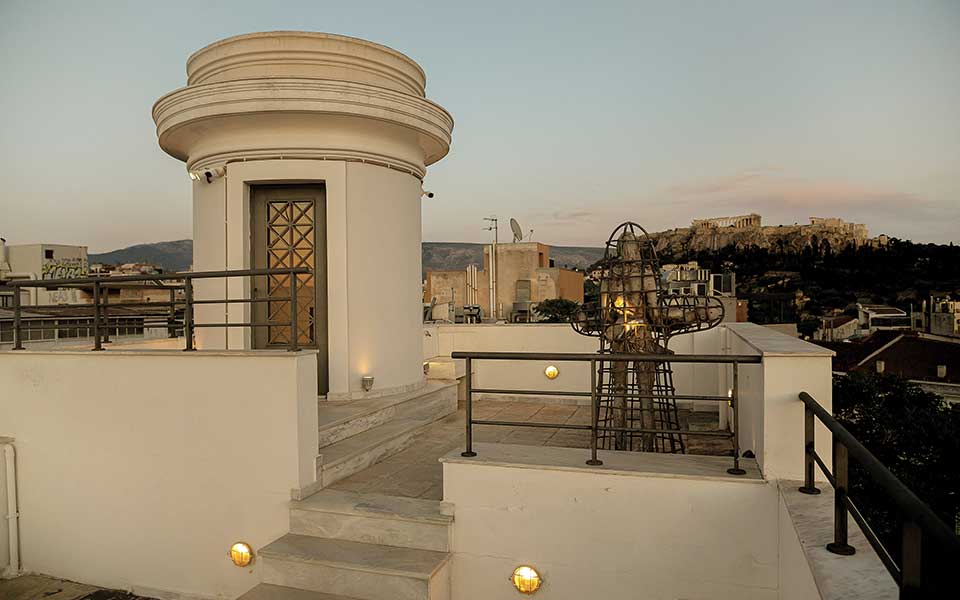
The Acropolis is clearly visible from the roof of the building.
© Yiorgos Vellis
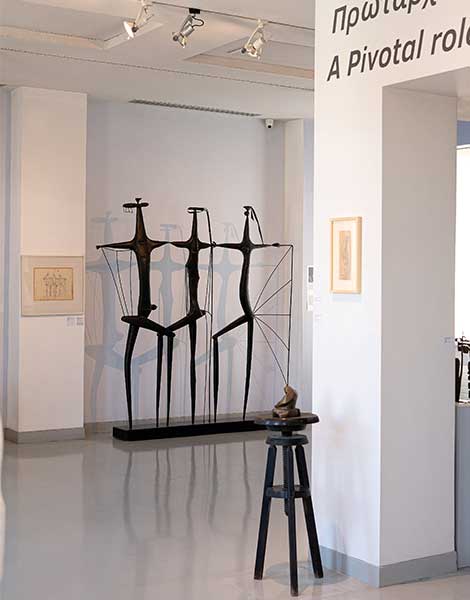
View of the second floor with sculptures and drawings by Alex Mylona
© Yiorgos Vellis
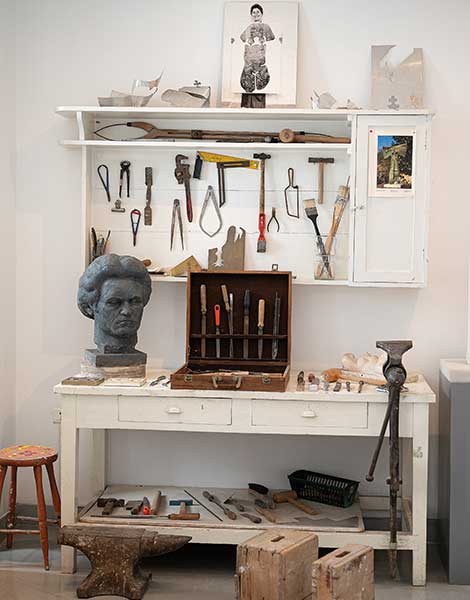
The workshop with the tools of her trade.
© Yiorgos Vellis
Alex Mylona was born in Athens in 1920. At the age of eight, she began her first painting lessons with an English painter. In 1945, she studied sculpture at the Athens School of Fine Arts, and in 1951, she met Henry Moore, one of her main influences, during his exhibition here. In 1959, she exhibited “Cry of Medea” in Paris; it caught the eye of art critic Christian Zervos and sculptor Hans Arp. In 1960, she represented Greece along with three other artists at the 30th Venice Biennale. “Here is Greece, with the brilliant personality of a woman, the painter-sculptor Alex Mylona, who fills the Greek pavilion and brings it to prominence,” wrote the international press. Mylona started with figurative works, such as “Medea” in cement and “Adam and Eve” in aluminum, and gradually transitioned to abstraction, incorporating modern art elements.
Though she worked with various materials, she ultimately devoted herself to marble; on the rooftop of the museum, you’ll find the marble statues “Kouros” and “Kore”. The building, featuring art nouveau influences, was built in 1920 by architect Vasilis Tsagris, an advocate of eclecticism in Greece. In the early 1990s, Mylona purchased a then-dilapidated building in Aghion Asomaton Square to create a space to exhibit her works and those of other artists. Today, the ground floor of this space holds her workbench, tools, and models; her artistic journey from the 1950s to the late 1990s unfolds from the second floor to the rooftop.
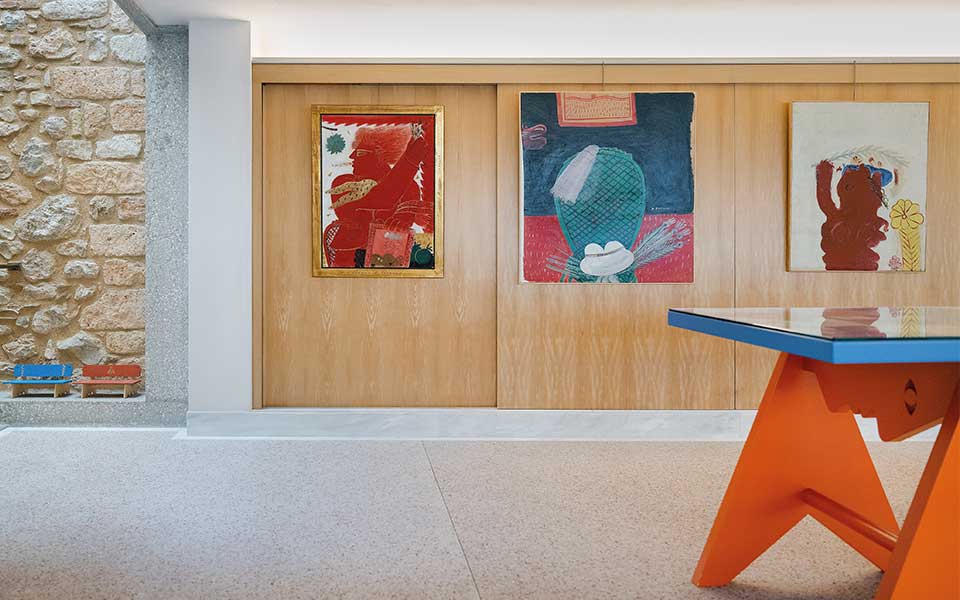
Paintings coexist with the furniture designed by the artist. Fassianos has worked on nearly every surface of the space, engraving sheaves of wheat and birds, favourite subjects in his works.
© Courtesy Alekos Fassianos Estate, photo: Paris Tavitian
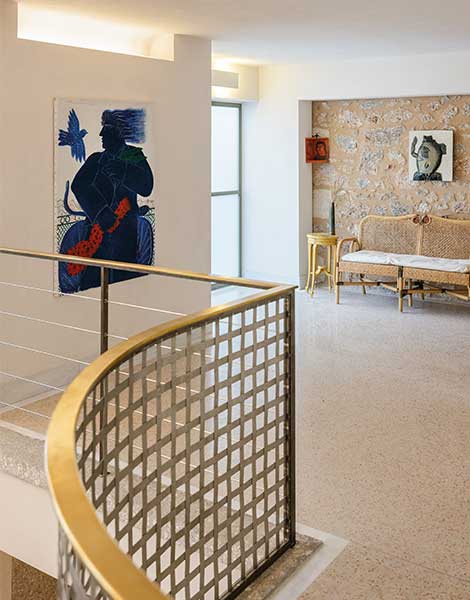
© Courtesy Alekos Fassianos Estate, photo: Paris Tavitian
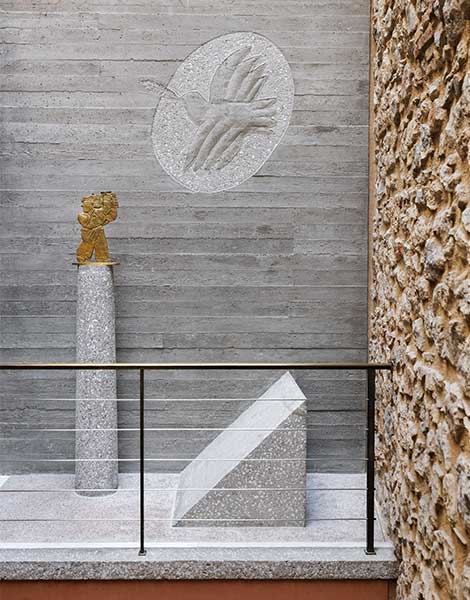
© Courtesy Alekos Fassianos Estate, photo: Paris Tavitian
Alekos Fassianos, the renowned Greek painter who had a significant presence on the French art scene for five decades, was born in the Aghios Pavlos neighborhood of Athens in 1935. His childhood was spent in a neoclassical house with an inner courtyard and a tiled roof, where his extended family lived. In the 1970s, the artist’s mother had the house demolished to build an apartment building. In the late ’80s, Fassianos collaborated with his friend and architect Kyriakos Krokos to redesign it, creating a small exhibition space for the painter’s works. The project was completed in 1996, but the museum did not open until April 2023, as the artist would not consent to have a museum in his honor while he was alive (Fassianos passed away in 2022).
The museum reflects his own taste from floor to ceiling. Sheaves of wheat, a favorite motif, are engraved on the marble surfaces, and a large colorful dragon looks down from the ceiling in the basement. On the ground floor are works depicting scenes from his neighborhood and the city at large; mythological heroes, references to Cavafy, and Byzantine themes; and portraits of everyday protagonists such as “The Smoker” or “Café Goers.” Furniture pieces of his own design add to the atmosphere and reveal a genius that extended beyond the canvas. Display cases contain toys he made as a child, including a puppet priest, in tribute to his grandfather, who served at the Aghios Pavlos church, and correspondence with other artists, archival photographs, and theater set designs.
On the third floor of the building, his workshop and bedroom, complete with his wardrobe, have been recreated. Hats and shirts, embroidered by the artist with his favorite motifs, are on display. For Fassianos, art was a way of life, evident in his works, his clothes and his home.
A stroll down one of the...
From olive presses and traditional costumes...
In 2006, inspired by a shared...
Since 1928, this family-run wine taverna...